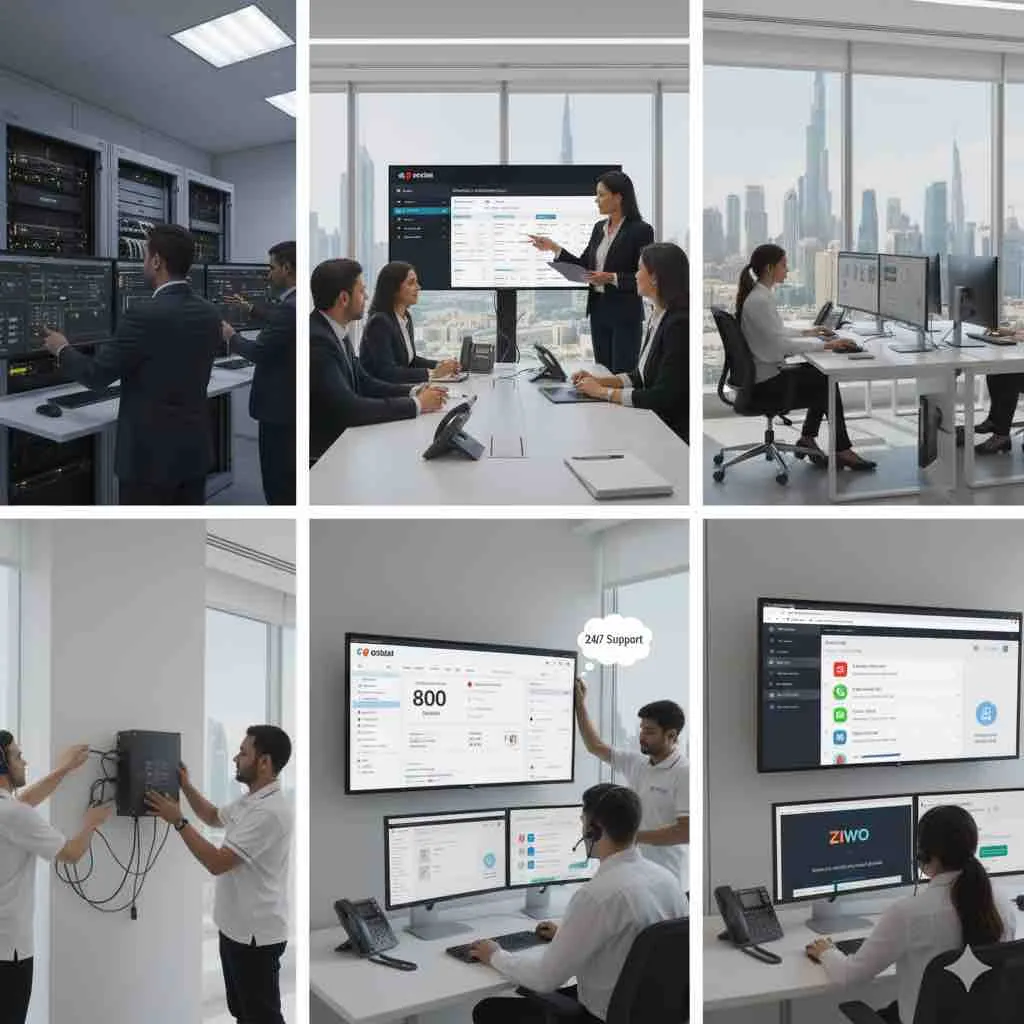Customer Data Security in Call Centers: Best Practices for Compliance
Call centers handle a wealth of sensitive customer information daily, making data security a top priority.
July 27, 2024, 2 min read,
 Image Caption
Image CaptionAccess control technology has evolved significantly with advancements in IoT and smart technology, reshaping security protocols in workplaces. These innovations address modern demands for agility, safety, and efficiency in access management.
The integration of IoT (internet of things) devices in access control systems enables smarter and more interconnected environments. These systems leverage cloud technology and hybrid work models, making touchless access via smartphone apps and sensor technology a standard feature.
The convergence of cyber and physical security systems is crucial. Integrating IT and physical security infrastructure enhances operational efficiency, reduces redundancies, and fosters better collaboration. This holistic approach ensures a robust security framework.
Touchless access has become a key trend due to its safety and convenience. Improved physical signal configurations and motion sensing technologies reduce accidental unlocks. Enhanced mobile experiences, leveraging smartphones for access, are gaining traction.
Biometric technology, using facial features, fingerprints, or other physical identifiers, is becoming a pivotal element in access control. Mobile systems now integrate biometric features like Face ID, adding an extra layer of security.
Remote security and access management have revolutionized control capabilities. They allow organizations to manage security from anywhere, offering flexibility and quick response times to security events. Integration with video access control ensures secure remote unlocks.
The future of access control lies in the seamless integration of various security systems. Unified platforms enhance visibility and situational awareness, optimizing efficiency and user experience. Open technologies facilitate this integration, making systems scalable and future-proof.
AI-driven automation in access control streamlines operations and enhances security. AI helps identify anomalies and trigger specific security protocols, minimizing human intervention and improving response times during emergencies.
MFA is gaining popularity due to its enhanced security against cyber threats. It requires multiple credentials, such as biometrics and PIN codes, ensuring robust protection for high-risk areas.
Hybrid cloud solutions offer scalability and centralized control for managing multiple sites. They provide real-time activity alerts and remote monitoring, blending the benefits of cloud and on-premise systems to meet diverse organizational needs.
Modern access control devices now integrate multiple functions, such as HD cameras, two-way audio, and video intercoms, into single units. These all-in-one solutions are cost-effective, space-efficient, and enhance security and usability in commercial settings.
By adopting these advanced access control technologies, businesses can ensure secure, efficient, and adaptable security solutions that meet the evolving demands of modern workplaces.
Call centers handle a wealth of sensitive customer information daily, making data security a top priority.

With the rise of Artificial Intelligence (AI), companies are finding innovative ways to revolutionize their customer feedback services

Embracing Technology for Enhanced Patient Care

Customer service is not just about solving problems and answering questions; it's also about understanding human psychology and emotions. Call centers are at the forefront of this intricate interaction, where every conversation can impact customer satisfaction. In this article, we delve into the psychology of customer service and how call centers can harness it to leave customers delighted.

In this article, we'll explore the key strategies that can transform your training program and empower call center agents to excel in their roles.

Branch connectivity is a crucial aspect of modern business operations...

In this article, we'll explore the pros and cons of each approach to help businesses make an informed choice.

Get know about The Internet of Things (IoT): Connecting the Smart World

In this article, we will delve into the crucial role of DNS in the internet, its function, and its significance in simplifying our online experience.

Voice over Internet Protocol (VoIP). what you should know about it.

Do you need to install a server in your place or do you need outsourcing?

Technical services for installing and setting up servers and supporting servers such as HP and Dell at your' place

video surveillance setups, CCTV gear with setup and installtion services.

In today's globalized business landscape, powerful communication and customer service are vital for achievement.

One question many business owners often wonder is whether they need a call center solution.

It's crucial to understand the essential software and equipment required to set up a call center. In this article, we'll walk you through the key components you need to establish a functional call center.

IPv4 vs. IPv6: Navigating the Transition to the New Internet Protocol

In today's world, fast internet is important. There are two common ways to get it: Fiber-to-the-Home (FTTH) and Digital Subscriber Line (DSL).

Acronyms like DSL and VDSL often leading to confusion about their meanings and capabilities. Are they the same thing? Or do they represent distinct technologies?

In this article, we'll dive into the world of call center performance measurement and explore the critical metrics that drive success.

"This has been by far the worst airline call center experience I've ever had"

In a fast-paced digital world, where communication and technology are vital, ArcNet stands as your reliable partner for all your IT and Telecom needs.

Enhance your business communication with ArcNet’s cutting-edge Call Center Solutions in Dubai, UAE. From advanced software to customized projects, we empower businesses with scalable, efficient, and cost-effective call center services tailored for success.

Discover how custom IT applications are reshaping the landscape of education, fostering innovation, accessibility, and collaboration.

Deliver exceptional customer service and improve agent efficiency with our Call Center Solution, available on-premise or in the cloud

Structured cabling refers to the standardized, organized, and comprehensive cabling system that serves as the foundation for all communication networks within a building or campus....

Building connections that matter — discover how to set up a powerful call center in Dubai with the right technology, people, and local expertise

Here’s a simple breakdown of on-premise vs. cloud contact centers — setup time, costs, scalability, and compliance tips to help you choose what fits your business best.

Find the perfect call center setup for your Dubai business — scalable, bilingual, and built for UAE success with ArcNet.
